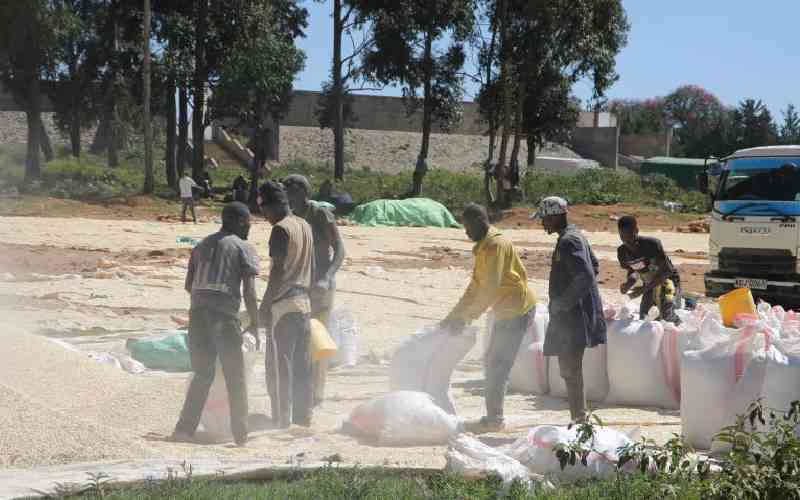It is said that when you see a house on fire put out the fire first then ask for who put the house on fire. To me President Uhuru Kenyatta has put out the fire by subsidizing Unga. Now we can start asking for who put the “unga” house on fire.
Very simply a subsidy is a financial aid to promote the recipient. There are producer and consumer subsidies. The former ensure producers are better off while the latter reduce the price of goods to the consumer as has been done with Unga. Many subsidies are unsustainable because they are financed by the tax payer and come with high opportunity costs. The unga subsidy is in force only up until July 31. This then justifies why sustainability strategies should be planned.
The discipline of project planning uses problem tree or root cause analysis to find solutions by mapping out the anatomy of cause-and-effect around a problem. The analysis leads to more understanding of the problem and its often interconnected causes.
In one of his writings Chinua Achebe cites an Igbo proverb that says, “A man who does not know where the rain began to beat him cannot say where he dried his body.” Do we know where the “unga” rain started beating us and do we know how to dry ourselves? That is the unga question which problem tree analysis can be used to answer.
Prices are high because there is a shortage of maize. Our leaders have identified one chunk of the problem to be physical and biological causes including draught and diseases. The other chunks include social cultural, political and economic factors.
Social cultural factors include the organization of land and labour use. Population growth that reduces land size and rural urban drift that reduces rural labour supply are a chunk of the causes. The 2010 Constitution dedicated a chapter to land policy including maximum and minimum landholdings. Pressured by population growth the average landholding continues to shrink and with it productivity.
Economics makes the largest chunk of the problem. Economists tell us that there are a category of goods in competitive supply meaning that they are wanted for alternative uses. Suppliers of such goods will channel it to the avenue with best returns. Maize is such a good.
Nick Hutchinson, the chairman of the Cereal Millers Association (CMA) and CEO of Unga Feeds Ltd has been publicly quoted to think that we are scrambling for the little maize available with poultry, cows and pigs — and it looks like humans are losing. Consider that Kenya has about 31 million birds and close to 20 million dairy cows and you will get a rough picture of the feed required. Another competitor, Corn oil production has steadily been increasing.
Last week, The Standard revealed that in 2016 there was a 14 per cent drop in maize production yet there was a 59 per cebt increase in maize exportation. Data prepared by the Regional Agricultural Trade Intelligence Network (Ratin) shows that a 90-kg bag of maize retailed at Sh4,898 in Dar es Salaam. The same quantity of maize fetched about Sh2,700 in Nairobi and Sh4,597 in Burundi. This may explain the 59 per cent increase in exports that must have robbed us of our would be reserves. But wait a minute, when the Minister for Agriculture faced a parliamentary committee last week to explain maize shortages he heard that some farmers are holding maize in their stores. Interestingly the country imported at higher prices than offered to local farmers.
Some farmers of maize have switched to farming maize for fodder rather than for human consumption. This could have contributed to the 14% fall in maize production
In 2016 a number of farmers in areas that have traditionally grown maize including Narok and Trans Nzoia are reported to have cut down maize to grow grass for the booming dairy industry. And most have no regrets.
It makes both economic sense and cents because while growing grass requires very little attention and is harvested four times a year, maize is tedious and harvested once or twice.
To me the root cause of the problem is political.
Prof Bwisa teaches entrepreneurship at JKUAT
[email protected]
Stay informed. Subscribe to our newsletter
 The Standard Group Plc is a
multi-media organization with investments in media platforms spanning newspaper
print operations, television, radio broadcasting, digital and online services. The
Standard Group is recognized as a leading multi-media house in Kenya with a key
influence in matters of national and international interest.
The Standard Group Plc is a
multi-media organization with investments in media platforms spanning newspaper
print operations, television, radio broadcasting, digital and online services. The
Standard Group is recognized as a leading multi-media house in Kenya with a key
influence in matters of national and international interest.
 The Standard Group Plc is a
multi-media organization with investments in media platforms spanning newspaper
print operations, television, radio broadcasting, digital and online services. The
Standard Group is recognized as a leading multi-media house in Kenya with a key
influence in matters of national and international interest.
The Standard Group Plc is a
multi-media organization with investments in media platforms spanning newspaper
print operations, television, radio broadcasting, digital and online services. The
Standard Group is recognized as a leading multi-media house in Kenya with a key
influence in matters of national and international interest.






